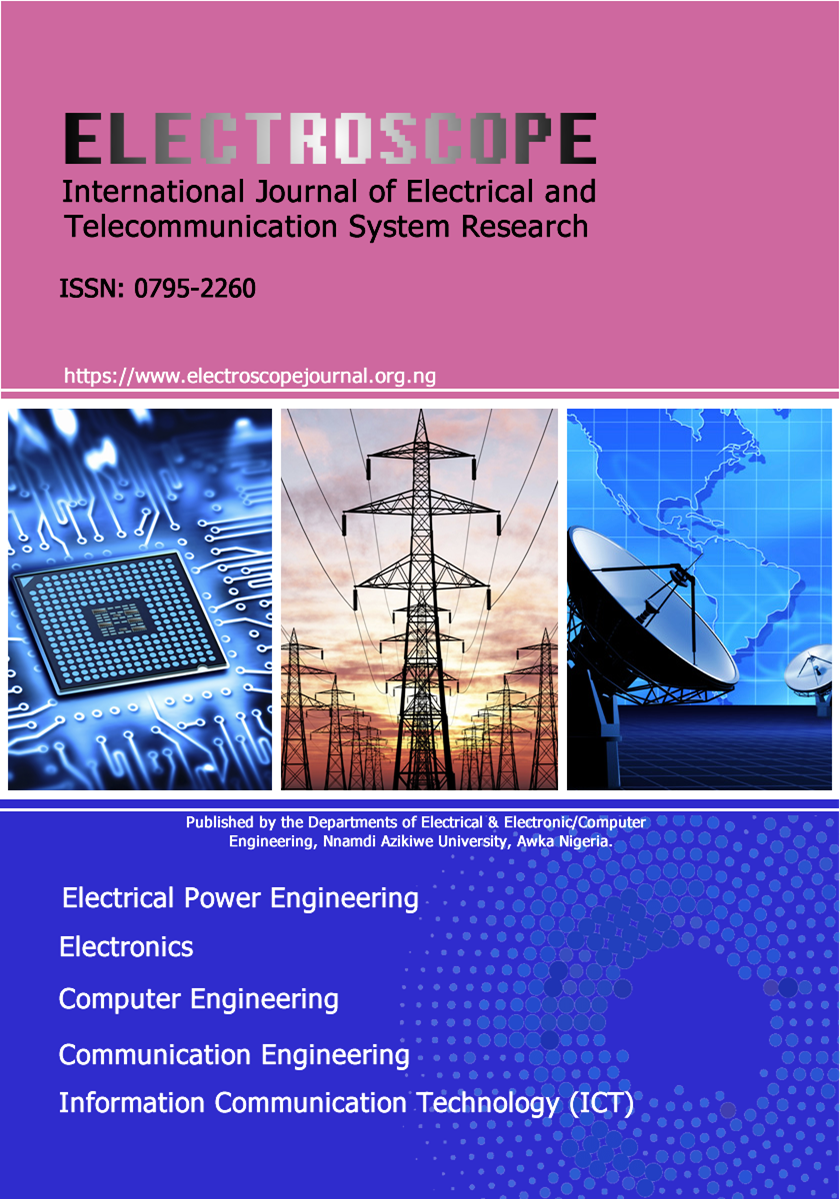Fuzzy Based Energy Management Model for Smart Campus Hybrid Microgrid
Keywords:
CHMG, Fuzzy Logic, Hybrid, MatLab, Microgrid (MG)Abstract
This work presents an energy management model (EMM) for Smart Campus Hybrid Microgrid (CHMG) using fuzzy Logic. The School of Postgraduate Studies (SPGS) sub-grid, in Nnamdi Azikiwe University Awka Campus Anambra State Nigeria was taking as the case study. Four major electrical energy input sources are available to this sub-grid namely; solar photovoltaic (PV), diesel generator, utility grid and auxiliary energy source from neighbouring sub-grids. The electrical loads at the SPGS sub-grid were categorized into high priority (hpl), priority (pl) and less priority (lp) categories. The algorithm that ensures proper selection of available energy sources and corresponding supply to the load categories was developed. The solar plant was modelled using four major states represented by the following fuzzy logic linguistic variables; VERYLOW (12.1V), LOW (12.5V), HIGH (13V) and VERYHIGH (13.5V) depicting the battery voltage of a unit battery. The other energy sources to the microgrid had only to possible states represented by two fuzzy logic linguistic variables; LOW (1-1.5V), and HIGH (4.5-4.9V) and this implies that they are either available or not available. Eleven simple fuzzy rules was used to model both the energy scheduling of the different energy input sources and the load shedding procedure in times of energy shortfall within the sub-grid. The fuzzy logic model was then implemented and simulated in MatLab Simulink using a fuzzy logic controller. Ten different test scenarios were used to test the Simulink model and the system output response was compared with expected system response. It was observed that the Energy Management System (EMS) was able to implement the expected energy management algorithm for the SPGS sub-grid.


